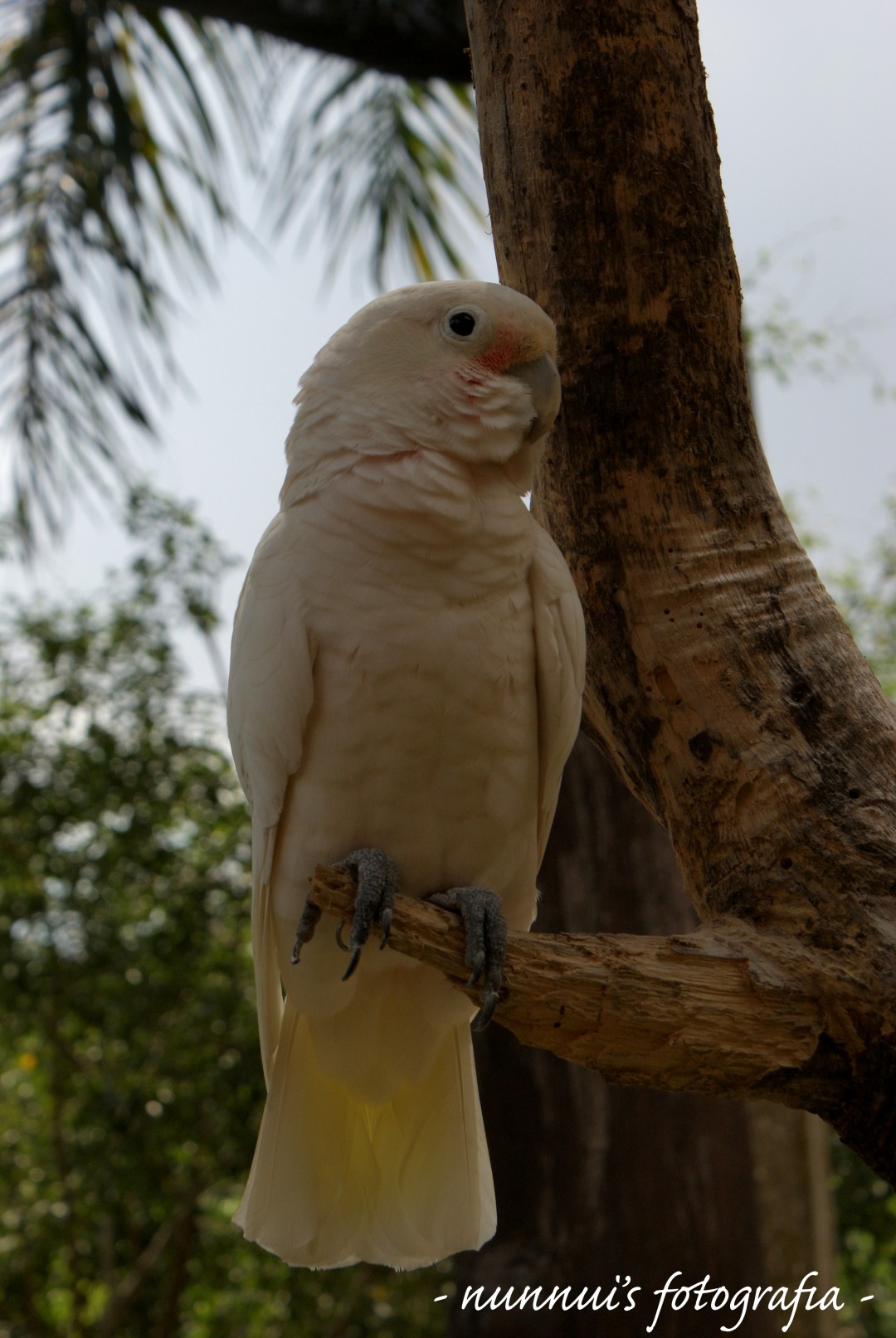Tanimbar Corella
A species of White Cockatoos and Corellas, Also known as Tanimbar Cockatoo Scientific name : Cacatua goffiniana Genus : White Cockatoos and Corellas
Tanimbar Corella, A species of White Cockatoos and Corellas
Also known as:
Tanimbar Cockatoo
Botanical name: Cacatua goffiniana
Genus: White Cockatoos and Corellas
Content
Description General Info
Description
Tanimbar corellas weigh, on average, about 250 g (9 oz) for females and 300 g (11 oz) for males. They are about 31 cm (12 in) from head to tail. Like all members of the family Cacatuidae, the Tanimbar corella is crested, meaning it has a collection of feathers on its head that it can raise or lower. Its body is mainly covered with white feathers, with salmon or pink colored feathers between the beak and eyes. The deeper (proximal) parts of the crest feathers and neck feathers are also a salmon color, but the coloration here is hidden by the white color of the more superficial (distal) areas of these feathers. The underside of its wing and tail feathers exhibit a yellowish tinge. The beak is pale grey and eye colour ranges from brown to black. Both sexes are similar. They are often confused with the little corella (bare-eyed cockatoo) due to their similar appearance. The maximum recorded lifespan for a (captive) Tanimbar corella is 28 years and she is still alive today – though this figure may be a significant under-representation, considering the long-lived nature of many other cockatoo species. 
Size
32 cm
Life Expectancy
18-70 years
Nest Placement
Cavity
Feeding Habits
Tanimbar Corella thrives on a varied diet that includes fruits, nuts, seeds, and insects. Their foraging habit involves skillful manipulation of food items, often at specific feeding times. They exhibit unique preferences for certain foods depending on availability.
Habitat
Tanimbar Corella primarily inhabits tropical environments, including cleared and cultivated coastal areas, as well as inland primary and secondary forests. These regions usually display a diverse range of flora that provides both food and nesting opportunities. Tanimbar Corella's adaptability allows it to thrive in both natural and altered landscapes within broad tropical geographical zones.
Dite type
Omnivorous
General Info
Feeding Habits
Bird food type
Species Status
Due to ongoing habitat loss on Tanimbar, limited range and illegal hunting, the Tanimbar corella is evaluated as Near Threatened on the IUCN Red List of Threatened Species. It is listed on Appendix I of CITES. In the 1970s, Japanese loggers ravaged the islands. Many of the dazed, disoriented birds were captured for the pet trade. Although many died from stress during shipment, there may be a small silver lining behind this ecological disaster, because many Tanimbar corellas have reproduced in captive breeding programs. As such, there are now more Tanimbar corellas in captivity than in the wild. 
